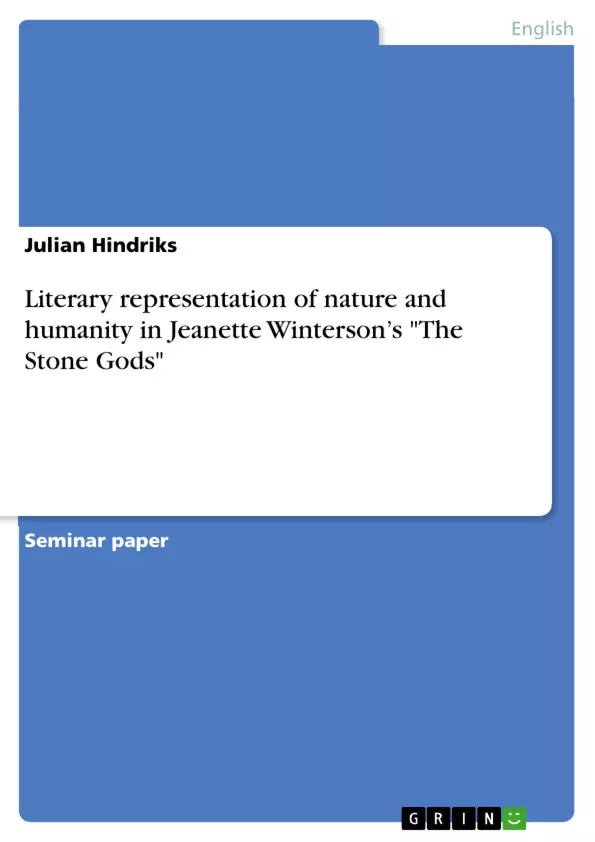How is nature represented in the novel? How do the characters think about nature? These questions lead me to my hypothesis. Seeing all the devastating, dystopian effects, I presume: In the novel The Stone Gods by Jeanette Winterson the concept of nature is represented as a binary opposite to the concept of humanity. This hypothesis includes the reference to a binary opposition, which describes “a pair of mutually exclusive signifiers which are logically opposed.” (Oxford Reference)
I want to pursue this Ecocriticism approach, which refers to “the study of literature in relation to environmental issues” (Garrard 2007), by focussing on the structure, the macro-level of the text. Therefore, I will also consider the form of the novel, for example with its rhetorical tropes and chronologically work through the plot and setting of the novel looking for evidence, which supports or negates the hypothesis. Part 3 of the novel, “Post-3 War”, will not be part of my analysis, because it does not include relevant, ecological representations of nature.
Inhaltsverzeichnis (Table of Contents)
- Introduction
- Theory
- Analysis
- “Planet Blue” – nature as a threat under human control
- “Planet Blue” – nature as a provider for human needs
- "Easter Island” – nature as a religious sacrifice
- “Wreck City” – nature and humanity reunite
- Conclusion
- Works Cited
Zielsetzung und Themenschwerpunkte (Objectives and Key Themes)
This paper analyzes Jeanette Winterson's The Stone Gods (2007) to explore the relationship between nature and humanity in a dystopian science-fiction context. The novel presents four interconnected stories from different points in human history and future, each highlighting the destructive tendencies of humanity towards nature. The paper aims to examine the representation of nature within the novel and explore how the characters perceive and interact with it.
- The destructive impulses of humanity and their impact on nature
- The concept of nature as a binary opposite to humanity
- The representation of nature as a threat, a provider, and a source of religious significance
- The potential for the reunification of nature and humanity
- The influence of human perception and cultural context on the understanding of nature
Zusammenfassung der Kapitel (Chapter Summaries)
The first chapter, "Planet Blue," presents nature as a threat to humanity, highlighting the disparity in the correlation between the two. This story describes the discovery of a new planet inhabited by a "scaly-coated monster with metal-plated jaws" (TSG 3-4), illustrating the fear and anxiety associated with the unknown and the perceived dangers of nature. The following chapters delve into the relationship between nature and humanity, showcasing how nature can be both a source of resources and a symbol of religious sacrifice. The chapter "Easter Island" explores the destructive consequences of human activities on the environment, while "Wreck City" suggests a potential for reconciliation and reunion between humanity and nature.
Schlüsselwörter (Keywords)
This paper focuses on the themes of nature, humanity, dystopia, environmentalism, Ecocriticism, binary opposition, cultural representation, and the relationship between human perception and the environment. It examines the representation of nature in Jeanette Winterson's The Stone Gods and investigates the complex interplay between human actions and the natural world.
- Citation du texte
- Julian Hindriks (Auteur), 2023, Literary representation of nature and humanity in Jeanette Winterson’s "The Stone Gods", Munich, GRIN Verlag, https://www.grin.com/document/1372300




